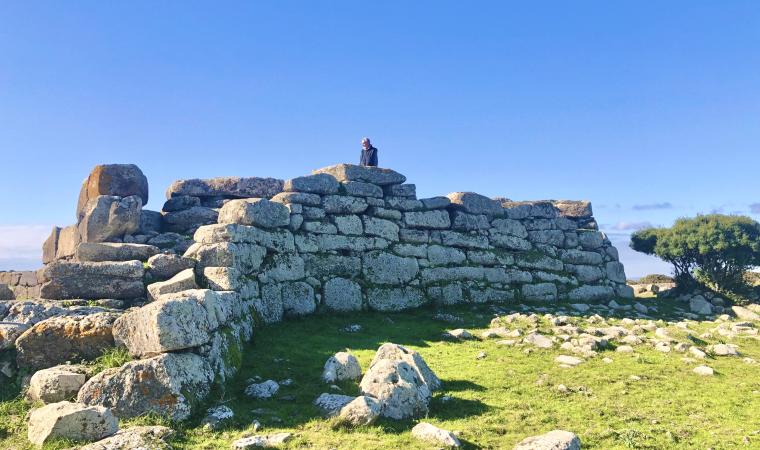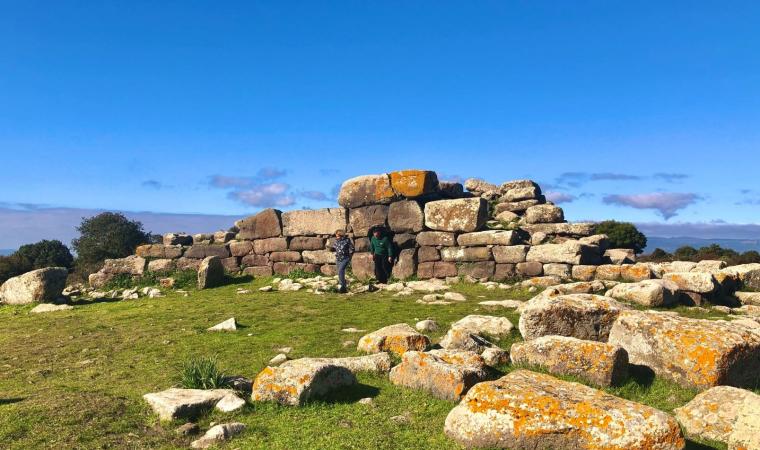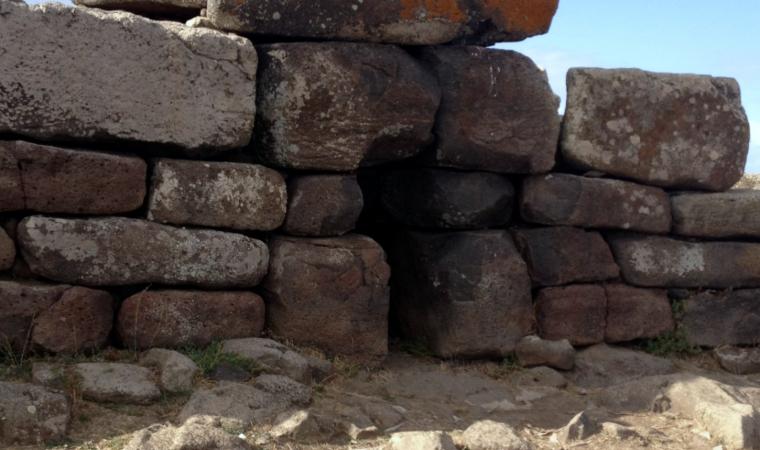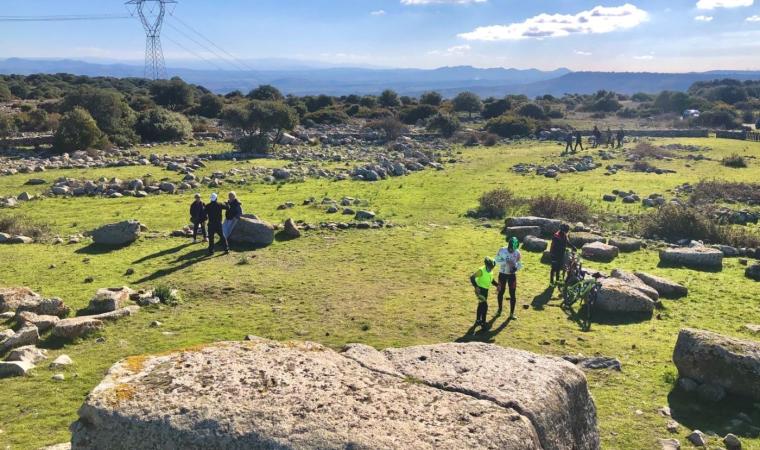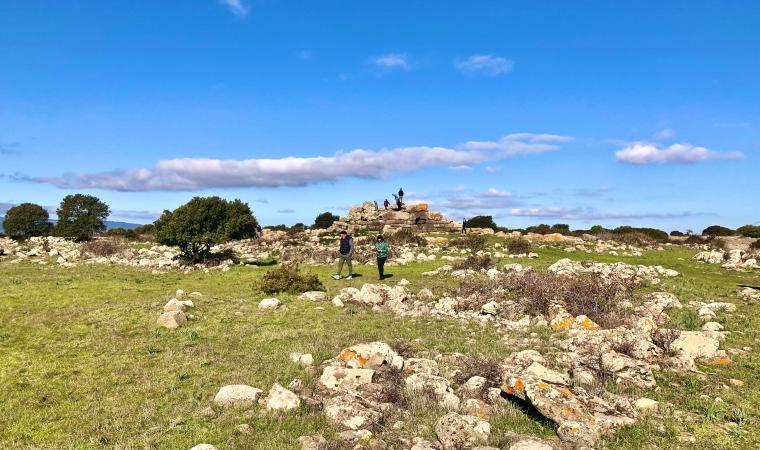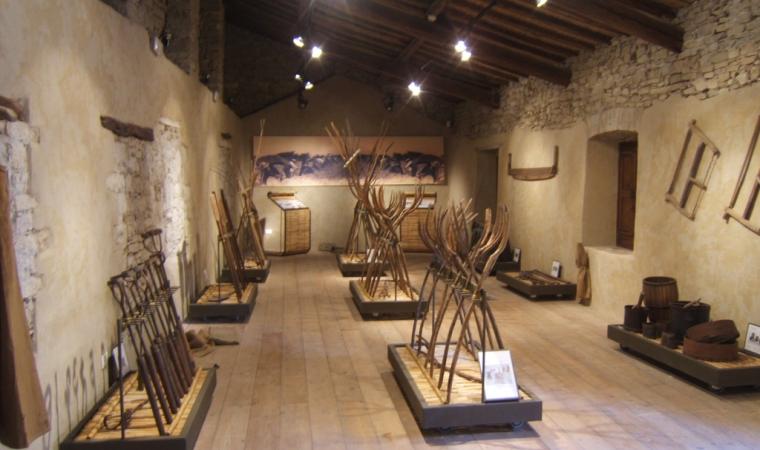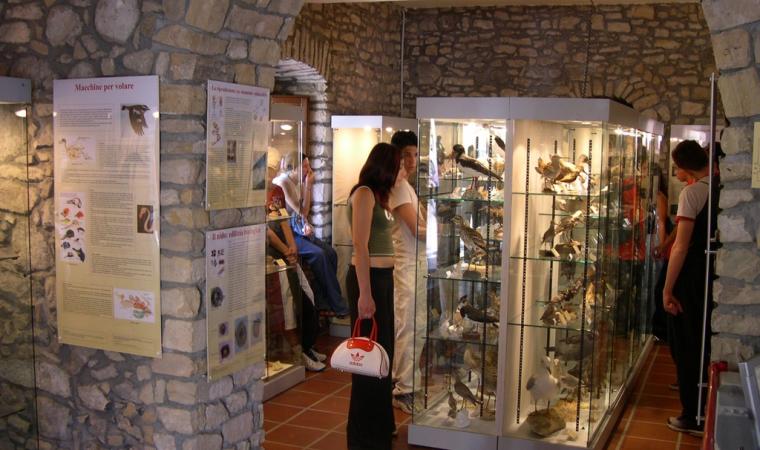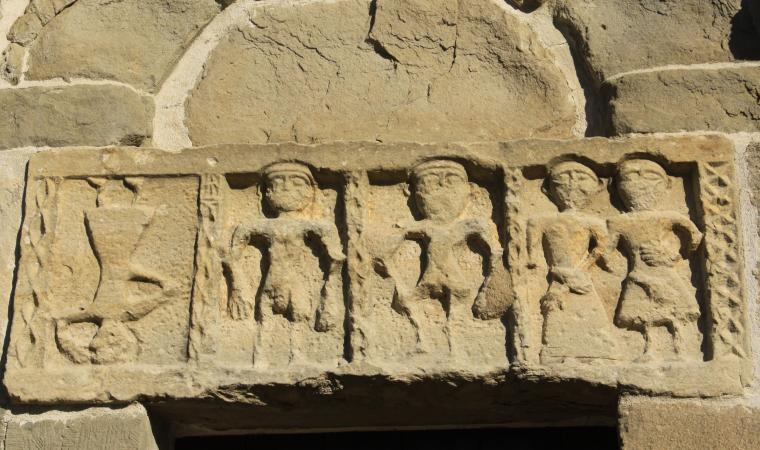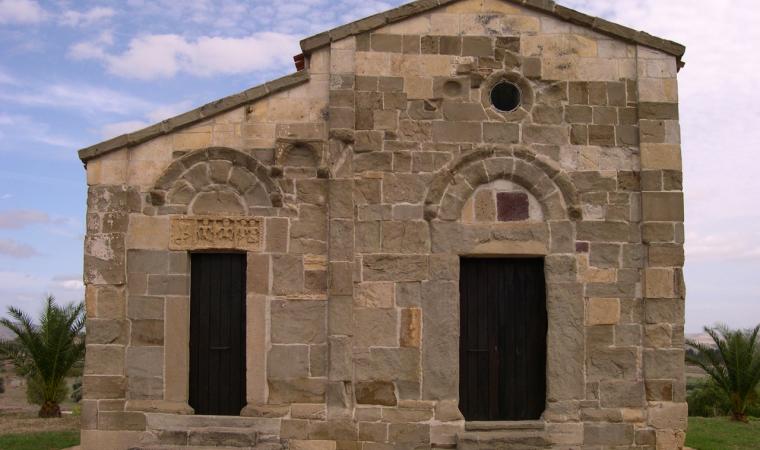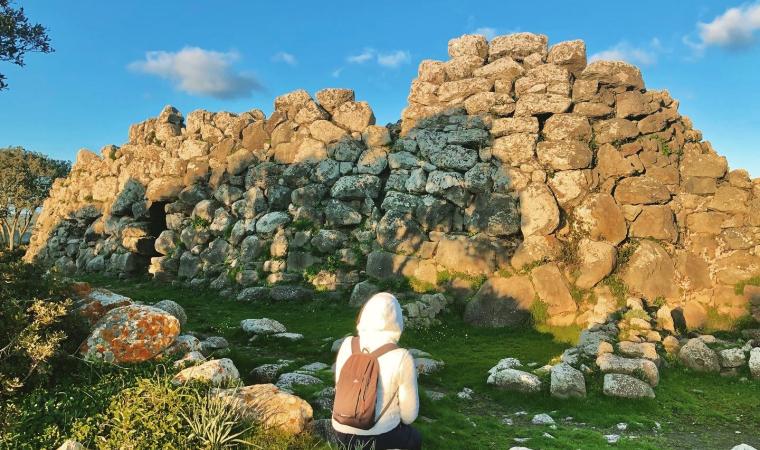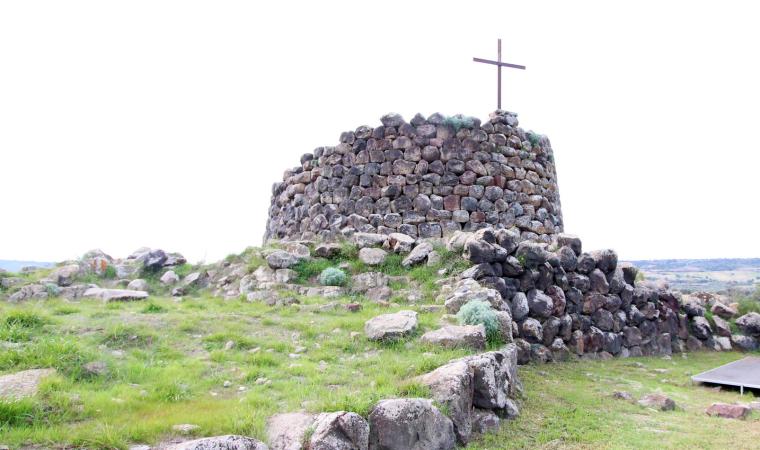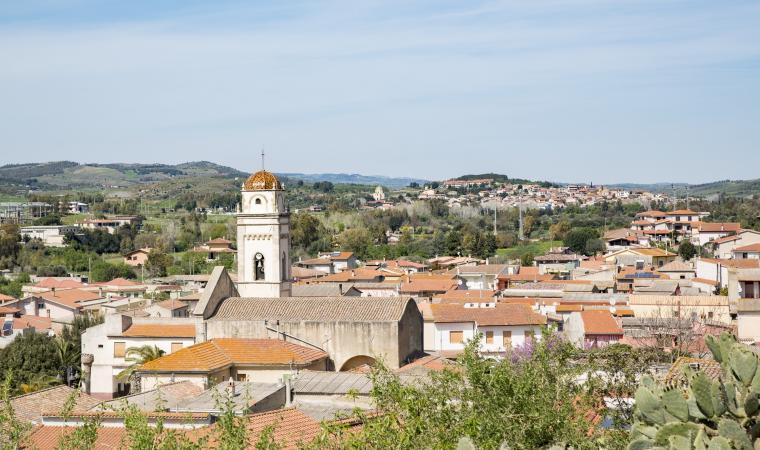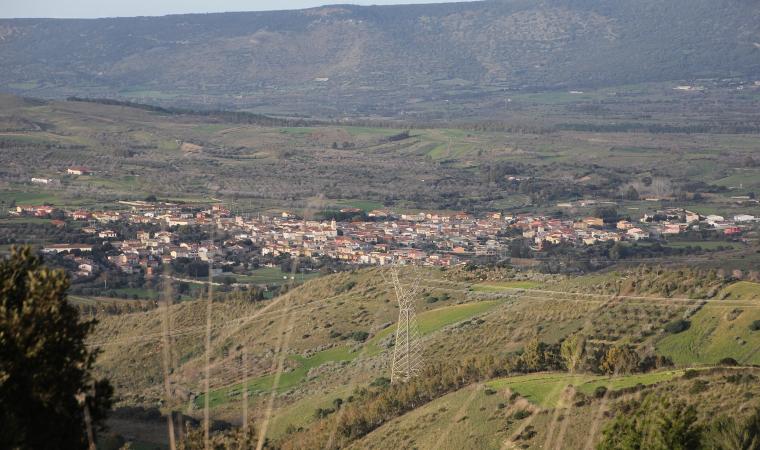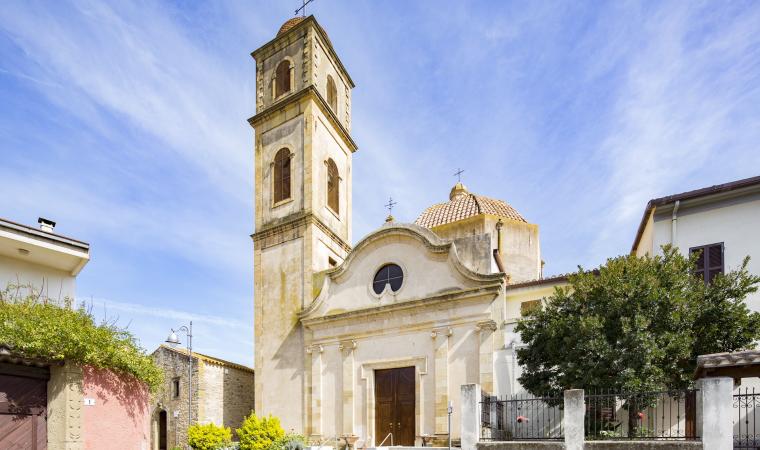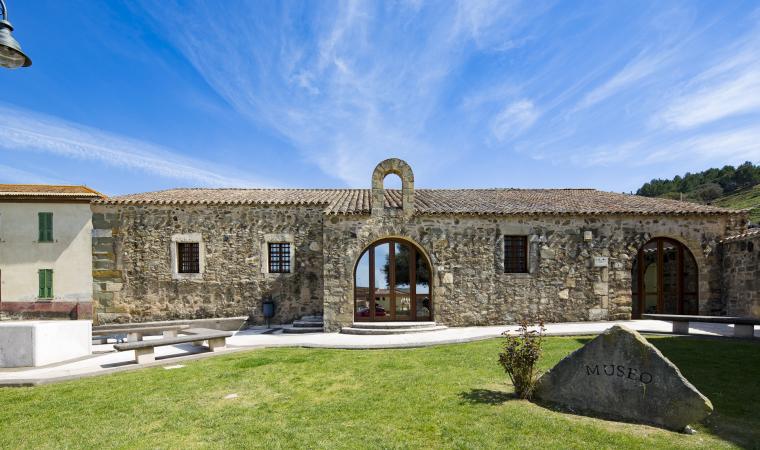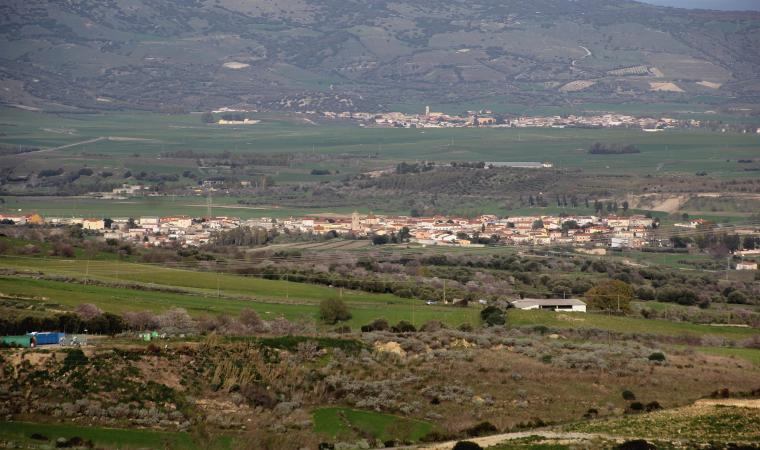“It is not a bull's head but a woman giving birth - not a male but a female emblem”. A recent theory regarding the nature of the Tombs of Giants questions the classic and undisputed definition of ‘bull protome’ used to indicate the shape of the approximately 800 collective burials dating back to the Nuragic era discovered on the Island. The fascinating hypothesis also involves one of the most significant and best-preserved tombs: sa Dom’e s’Orku, an extraordinary example of Bronze Age funerary architecture. The name, ‘the ogre's house’, often returns in this type of construction, to symbolise and increase the mystery and fear. Imposing and almost intact, the tomb stands out on a slight elevation (260 metres), on the northwestern side of the plateau of su Pranu or Giara di Siddi, with an enchanting view of the small town of Marmilla, just over six kilometres from the monument.
The burial building has a megalithic structure, meaning that it was made from medium-large sized blocks of dark basalt, extracted from the rocks of the ‘giara’ (basalt plateau), well worked and positioned in even rows. Despite the cyclopean technique, the tomb is, in fact, a row-type building. The front is semicircular - partially restored by a mid-20th century intervention. It is 18 metres wide, with a curved shape, and at one time was enclosed by a bench seat, a few traces of which still remain. Its distinctive feature is that the blocks used in the three rows at the base are smaller than those in the upper rows. The ‘door’ opens in the middle and is just over one metre high, with a formidable architrave above it. In the space in front of the entrance, rituals linked to the veneration of the dead took place. The body of the tomb, which is two and a half metres high and 15 metres long, is closed at the rear in a semicircle by a large monumental apse. The roof is made from flat granite slabs. Large stones, protruding walls and a flat arch roof give the tomb of Siddi an archaic image and suggest an earlier date than, for example, another famous Nuragic burial place in the Campidano area, is Concias in Quartucciu, made of smaller stones and with pointed arch roofing.
As soon as you enter sa Domu, you will see a large raised niche on the left, understood to be the room for the funeral and votive offerings. The cell shares similarities with domus de Janas and dolmens, Neolithic and Copper Age monuments. The floor on which the dead were placed was a pebble ‘bed’. It is thought that up to 300 bodies could be laid out in the burial chamber, accumulated progressively, which is ten metres long with a trapezoidal section. However, no bone fragments have been found, while the remains of grave objects are abundant and are mostly ceramic, dating the tomb to the Middle Bronze Age (16th-14th century BC). The excavations have also brought to light fragments of a bowl with Neo-Punic writing, Roman table ceramics and eighteenth-century Savoy coins, which bear witness to the (improper) reuse of the tomb up until recent times.
The Giara di Siddi, a cradle of prehistoric civilisations, is an open-air museum. The domu di Scaba ‘e Arriu dates back to the final part of the Neolithic period. The Bronze Age is documented not only by the sa Dom’e s’Orku, but also by about twenty nuraghi. The closest to the tomb is the Conca sa Cresia complex, while the most captivating (and mysterious) is sa Fogaia, which falls under the category of ‘corridor’ nuraghe but consists of three different bodies plus other secondary ones. It dominates the surrounding area from a cliff and is nestled in a setting of holm oaks and the Mediterranean nature of the park of the same name. The Roman era left behind tombs, remains of inhabited areas and coins. The plateau is a journey between the prehistoric era and nature, as is the whole territory of Siddi, a village characterised by narrow streets and ‘courtyard’ houses. The seventeenth-century Casa Steri is home to the Museum of Farming and Food Traditions, documenting the knowledge and flavours of the Marmilla region. Other places not to be missed are the Bird Museum of Sardinia and the church of San Michele Arcangelo, the smallest Romanesque sanctuary on the Island, with anthropomorphic reliefs carved in the architrave over the portal, a unique Sardinian medieval work of art.



